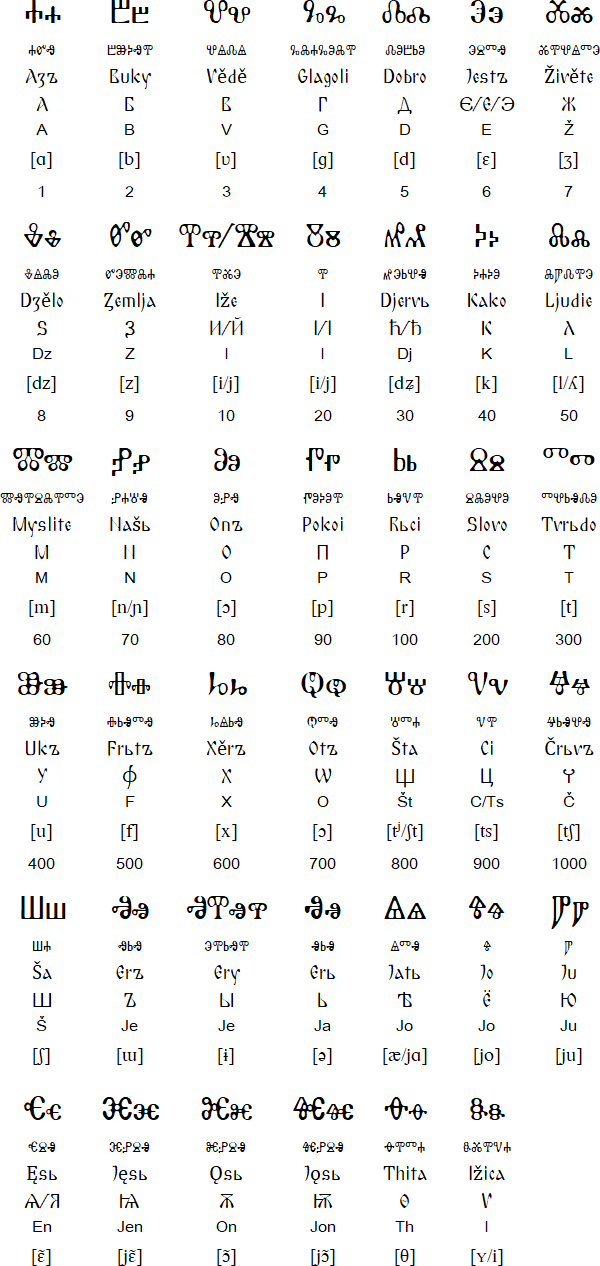Old Church Slavonic was used as the liturgical language of the Russian Orthodox church between the 9th and 12th centuries. A more modern form of the language, known as Church Slavonic, appeared during the 14th century and is still used in the Russian Orthodox church.
Glagolitic alphabet
This chart shows the Glagolitic alphabet with the names of the letters in Old Church Slavonic, the Cyrillic equivalents of the letters, and IPA transcription.
Download a Glagolitic alphabet chart (Excel)
Cursive version of the Glagolitic alphabet

Cursive Glagolitic provided by Igor Kusin
Links
Information about the Glagolitic alphabethttp://en.wikipedia.org/wiki/Glagolitic_alphabet
http://www.bulgaria.com/welkya/kritika/slave2.html
http://www.hr/darko/etf/et03.html
The Budapest Glagolitic Fragments - two fragments from a parchment manuscript containing nine lines of text from the Old Slavonic translation of the Life of St Symeon Stylites written in round glagolitic script: http://userweb.port.ac.uk/~cleminsr/introd.html
Information about St Cyril and St Methodius
http://en.wikipedia.org/wiki/Saint_Cyril
http://en.wikipedia.org/wiki/Saint_Methodius
Free Glagolitic fonts
http://www.wazu.jp/gallery/Fonts_Glagolitic.html
http://www.croatianhistory.net/etf/gl-font.html
ALPHABETUM - a Unicode font
specifically designed for ancient scripts, including classical
& medieval Latin, ancient Greek, Etruscan, Oscan, Umbrian,
Faliscan, Messapic, Picene, Iberian, Celtiberian, Gothic, Runic,
Old & Middle English, Hebrew, Sanskrit, Old Nordic, Ogham,
Kharosthi, Glagolitic, Old Cyrillic, Phoenician, Avestan, Ugaritic,
Linear B, Anatolian scripts, Coptic, Cypriot, Brahmi, Old Persian cuneiform:
http://guindo.pntic.mec.es/~jmag0042/alphabet.html









.jpg)
.jpg)

.jpg)





0 comments:
Post a Comment
Note: Only a member of this blog may post a comment.